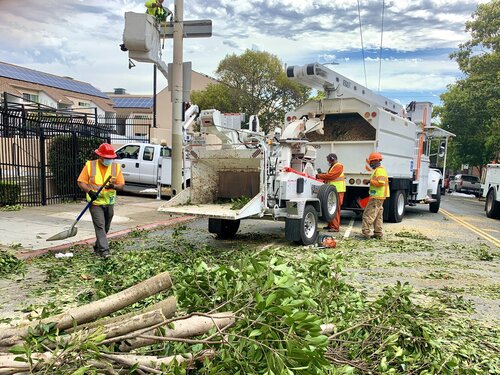Public Works: The Other Side of Public Safety
Public Works: The Other Side of Public Safety
Public Works: The Other Side of Public Safety : Most of us have a pretty good idea about the role of first responders. Police officers patrol the streets of our town 24 hours per day. In the community where I work, 99% of residents say their overall sense of safety is good or excellent. While, thankfully, most residents have not needed to call on fire or emergency medical services, they likely know someone who has. Satisfaction with Fire services is also very high. The Importance of Public Works
Public Works staff, first responders, and support workers are the silent arm of the state and local public safety apparatus. They’re the ones who keep our parks, buildings, bridges, sidewalks, streets, trails, and parking lots safe and clean for those of us who live, work, and recreate within them. They are the ones who prevent and respond to leaks and spills; respond to fallen trees; clear debris; maintain or improve parks; and respond to trash and human waste problems.
Public works can make the difference between a town’s useable streets, its safe parking lots, and its thriving downtown.
The Role of Public Works
However, this story is not about police and fire, it is about the other 3% of responders: the city’s street maintenance crews. In addition to regular maintenance of streets, stormwater systems, and related equipment, these crews perform what is typically referred to as “urgent work”. These jobs are often scheduled around major events. This work includes digging up a storm drain, repairing a broken traffic light, or performing routine inspections.
When these emergencies do occur, our public works department deploys the full resources of the city to ensure the safety of all in our community. The most visible group of these workers is our street maintenance crew.
Why Public Works Matters
How we tend to think about public safety often concerns the role of police and fire in each of the many situations in which their services are most needed. That’s true, but what really matters is how we prioritize our local public works. If we start focusing on our streets and roads, then we start getting serious about the health of our community.
Here’s a fact that might surprise many of you: Most collisions occur at intersections.
What do Public Works Do?
While Public Works is not a Public Safety service per se, it does have a number of public safety responsibilities. Some of these are shared with other emergency services, but there are many tasks, both mundane and exciting, that we take on to keep our community running smoothly. For many, Public Works is a bit of a black hole, with very little media coverage, but it is my hope that this article helps highlight some of the important functions we provide, and show how Public Works does impact public safety.
Traffic Control
Public Works oversees the parking, streets, and signals in the unincorporated areas of the county. We are responsible for pavement markings and signs. We manage the lighting around our roads and some of the inlets into the road system.
I think there is great power and potential in encouraging even our most reserved residents to consider calling on public safety services. They may have grown up with some idea of what a police officer or paramedic is like. You can do your part to break down barriers to increased calling by describing your officers and paramedics as friendly and kind.
Police officers and paramedics are trained in a variety of important skills, including how to put on a tie, carrying a briefcase, or driving a vehicle. As your image of police officers and paramedics begins to evolve, you might even find the people you see during your work day might be willing to try some new public safety skills and participate in the life of your community.










